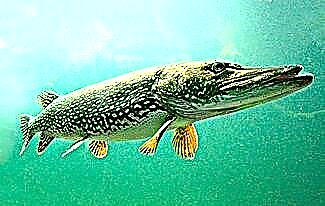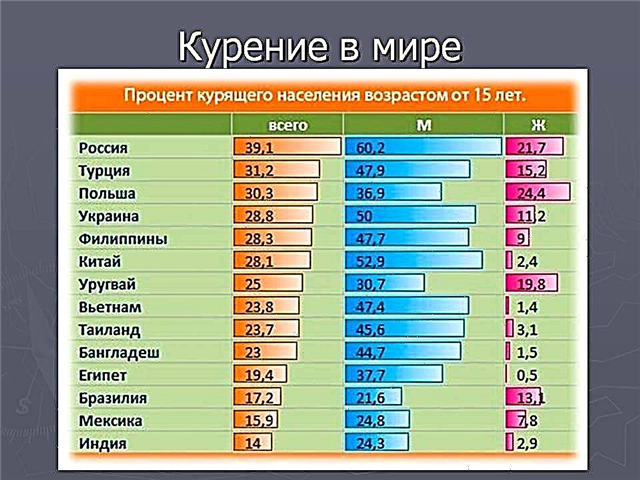Trees accompany a person always and everywhere. Dwellings and furniture were wooden, wood was used for heating or cooking, trees provided a variety of food. The territories inhabited by people were rich in forests, they even had to be cut down in order to get a field or territory for construction. In the course of population growth, it turned out that the resources of the forests are not at all bottomless, moreover, they are renewed rather slowly by the standards of human life. The trees began to be studied, protected and planted. Along the way, new opportunities for the use of trees opened up and their diverse world was revealed. Here are some interesting facts about trees and their uses:
1. The name of the tree is not at all a permanent dogma. At the end of the 18th century, a tree was discovered in North America, previously unseen by Europeans. By its outward resemblance, it was named “Yessolistnaya Pine”. However, the resemblance to pine was still too small. Therefore, the tree was successively renamed into yessole fir, thissol spruce, Douglas fir, and then called pseudo-tree. The tree is now called Menzies' Pseudo-Loop, after the botanist who discovered it. And this is not some exotic plant - the pseudo-slug has taken root well in the Moscow region and the Yaroslavl region.

Menzies' pseudo-slug
2. The most diverse family of trees is the legume family - there are 5,405 species.
3. Pounded willow bark has long been used as a medicine. But yew bark has been used as a cure for cancer relatively recently. In the UK, bark is used by laboratories that make components for chemotherapy.
4. There are also very dangerous trees. In America, from Florida to Colombia, the manchineel tree grows. Its juice is so toxic that even fumes and smoke from burning can damage the organs of vision and respiration, and the fruits can be poisoned. Even the ancient Indians knew about these properties of the mancinella.

Manchineel tree
5. Everyone knows about the amazing ability of the Japanese to make delicacies from the most incredible things. Maple leaves are such things. They are salted throughout the year in special barrels and put as a filling in the dough, which is then fried in boiling oil.
6. One large tree absorbs as much carbon dioxide per year as one modern average-powered car per 40,000 kilometers. Besides carbon dioxide, trees absorb other harmful substances, including lead.
7. One pine tree provides oxygen to three people.
8. In the northern hemisphere there are more than 100 species of pine, in the southern only one, and even that one at a latitude of 2 ° on the island of Sumatra in Indonesia.
9. As you might guess from the name of the spice, cinnamon is made from the bark of a tree, and the tree is also called cinnamon. The tree is grown for two years, then cut down from the ground. It gives new small shoots. They are skinned and dried by rolling into tubes, which are then ground into powder.
10. A tree called Copaifera produces sap that is identical in composition to diesel fuel. No processing is required - after filtration, juice can be poured directly into the tank. According to experimental studies, one medium-sized tree (about 60 cm in diameter) provides one liter of fuel per day. This tree grows only in tropical regions.

Copaifera
11. In the south of the Far East there is a large array of mixed forests, in which 20 different types of trees can be found on one hectare.
12. A quarter of the forests on Earth is taiga. In terms of area, this is approximately 15 million square meters. km.

13. Tree seeds fly. A birch seed can be considered a record holder - it can fly one and a half kilometers. Maple seeds fly away from the tree by 100 meters, and ash - by 20.
14. The fruits of the Seychelles palm - nuts weighing up to 25 kg - can float in the ocean for years. Medieval sailors were puzzled to find such a coconut in the middle of the Indian Ocean. However, the Seychelles palm tree cannot reproduce in this way - it grows only in the unique soil of the Seychelles. Attempts to artificially plant this tree in places with a similar climate ended in vain.
15. Tree seeds are not only moved by wind, insects, birds and mammals. The seeds of 15 species of tropical trees in Brazil are transported by fish. Some islands in the tropical West Indies have trees that attract turtles.
16. For the production of one A4 paper sheet you need about 20 grams of wood. And in order to save one tree, you need to collect 80 kg of waste paper.
17. Wood is mainly composed of dead cells. In most trees in the wood, only 1% of the cells are living.
18. During the Industrial Revolution, forests in the UK were deforested so intensively that forests now cover only 6% of the country. But back in the 18th century, some areas of present-day London were royal hunting grounds.
19. If the oak has acorns, then the tree is at least 20 years old - younger oaks do not bear fruit. And one oak grows on average from 10,000 acorns.
20. In 1980, Indian Jadav Payeng began planting trees on the deserted island of Aruna Chapori in the west of the country. Since then, he has grown a forest of over 550 hectares. The Payenga Forest is home to tigers, rhinos, deer and elephants.

Jadav Payeng in his own forest
21. Every Chinese over 11 years old must plant at least three trees a year. At least that's what the law passed in 1981 says.
22. Karelian birch, whose wood is very beautiful and is used for the manufacture of expensive furniture, is an ugly, undersized tree with crookedly curved branches.
23. Rainforests are being cleared at an alarming rate. Only in the Amazon basin are forests destroyed annually on an area equal to the territory of Belgium. Lumberjacks work no less shock in tropical Africa and on the islands of the Indonesian archipelago.

Desert Amazon
24. Sequoias, the tallest trees in the world, can produce an enormous amount of wood, but this wood is almost impossible to use for practical purposes - it is very fragile. At the beginning of the twentieth century in California, a storm broke a sequoia with a height of 130 meters.
25. Breadfruit tastes like potatoes. They make flour and bake pancakes. The tree bears fruit for 9 months a year, up to 700 fruits weighing up to 4 kg can be harvested from it.









